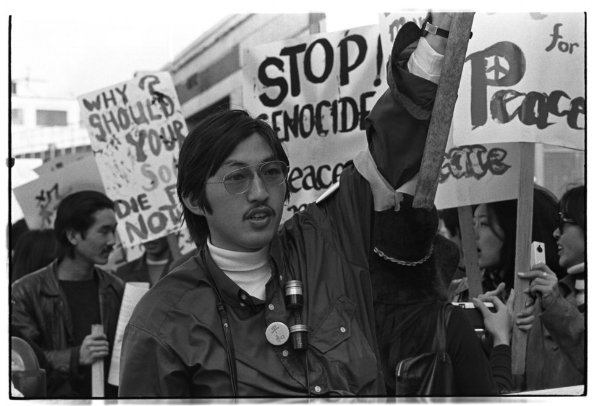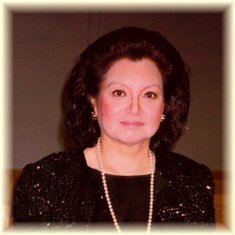The History of Asian Pacific American Heritage Month
Official Logo of Asian Pacific American Heritage Month
Asian Pacific American Heritage Month is a celebration of the culture and historical accomplishments of Asian and Pacific Islander Americans. This year marks APAHM’s 41st anniversary of its signing as a national celebration in 1978. But the demand for APIs and their heritage to be recognized had a humbling start a few years earlier with the “Asian American Movement,” fostering first in the Bay Area. To know how APAHM came about, we need to first understand the world in the 1960s, its recovery from WWII, and the resulting shift of cultural and political trends.
During President John F Kennedy’s acceptance speech he gave in his 1960’s United States Presidential win over Richard Nixon, he ran on a platform called the New Frontier, he forecasts change in the air, “We stand today on the edge of a New Frontier — the frontier of the 1960s, the frontier of unknown opportunities and perils, the frontier of unfilled hopes and unfilled threats.” President Kennedy was a heavily a pro-immigration advocate as his family were once Irish Immigrants that moved to the United States for better opportunity. This worked in favor for the API community as The Chinese Exclusion Act was the first time in U.S. history there was a ban on a specific ethnicity. This act to specifically ban Chinese People to immigrate to the U.S was signed in May 6, 1882 and remained an active law until 1943.
ASIAN PACIFIC AMERICAN PHOTOGRAPHIC COLLECTION VISUAL COMMUNICATIONS ARCHIVES
If the Bronx was the birthplace of the hip hop movement, San Francisco as the birthplace of the “Asian American identity.” The change needed for Asian Americans began with two San Francisco natives, born four years shy from each other: Yuji Ichioka and Bruce Lee. Public perception at that time of API’s were negative with such phrases like “Chinaman” and “Oriental” used to encourage xenophobia while also discouraging and shaming Asian immigrants. This was the status quo these two men had to overcome and their efforts helped progress the Asian American identity.
Yuji Ichioka was a UCLA Japanese historian, civil rights activist, and is considered to be the founding father of the term, “Asian American.” During part of his childhood, Yuji and his family were forced into a Japanese internment camp at the Topaz Relocation Center because of the United States reaction to the Pearl Harbor attack. When the family was released, they returned to San Francisco and Yuji dedicated his life to become a scholar of Japanese American and Asian American history. In 1969, Ichioka co-founded the UCLA Asian American Studies Center and became the first person to teach Asian American studies. While there were less than a million people of Asian descent in the 1960s, Yuji envisioned Chinese, Japanese, Filipinos and Koreans joining together for a shared political purpose to protest for civil rights, women’s liberation and the end of the Vietnam war. He and his partner, Emma Gee, had the idea of using a "Asian American banner" so they could have a larger impact.
Photo of Bruce Lee
As Asian American studies were being introduced into academia, Hollywood noticed a change—a new kind of Asian American in media. To categorize Bruce Lee in one role would not reflect all his work: He was a Hong Kong/American actor, director, philosopher and the pioneer of Mixed Martial Arts. The career-defining moment for Bruce that pushed him to superstar status was his starring role in “Enter The Dragon.” This was not by any means a small feat as Lee overcame Hollywood’s type casting problems that were based in stereotypes stemming from the anti-Chinese immigration and Anti-Japanese Post WWII propaganda. Lee was even denied a role for a TV show he pitched, called “Kung Fu,” because he didn’t look “American” enough. The role was given to a white actor. For Bruce to have a lead role in a movie promoted in both in the United States and Asia as an Asian American was groundbreaking as he would be considered the first international Asian American actor. In fact, the movie was chosen for preservation in the United States National Film Registry in 2004 by the Library of Congress as being "culturally, historically, or aesthetically significant." Its themes of decolonizing imagery and reconstructive narrative for Asian masses adds to the culture shift for Asian Americans in 1970s. It’s unfortunate that Lee passed away days before the movie premiered in 1973. Within the same year though, organizations in Washington were forming to advocate for Asian Americans on a national scale.
Photo of Jeanie F. Jew, Former president of the Organization of Chinese American Women
The Organization of Chinese Americans (now known as OCA - Asian Pacific American Advocates) was founded in 1973 and would be considered the first organization to give voice and representation to Chinese Americans across the United States. In 1977, The Organization of Chinese American Women was founded by Paulie Tsui who served on the advisory committee of the U.S. Center for International Women's year. Jeanie F. Jew, president of the Organization of Chinese American Women at that time, contacted government officials about the lacking Asian Pacific presence in the U.S. bicentennial celebrations occuring that year. She felt that Asian and Pacific Islander Americans were excluded from the stories told about individuals who helped shape and contribute to the country. This led to Frank Horton (R-NY) and Norman Mineta (D-CA) to introduce House Resolution 540 to make the first ten days of May to be “Asian/Pacific American Heritage Week.” President Jimmy Carter signed in 1978 a different Joint Resolution that designated it into an annual celebration. The month-long format didn’t start until 1990, when President George H.W. Bush signed the extension of the celebration into law.
Asian/Pacific America has evolved dramatically. In 2010, the US Census reported the Asian/Pacific Islander group to being the fastest growing ethnic minority in America. While there are great achievements being celebrated during APAHM, there are still issues that need public awareness which are affecting the community as a whole. Yuji Ichioka helped pave a way for Asian Pacific Americans to move forward, but not all Asian Pacific Americans are equal social economics. Margaret Simms, Institute fellow at the Urban Institute, wrote in her essay, “[the] “model minority” myth hides the economic realities of many Asian Americans...three-quarters of Asian Indians have at least a bachelor’s degree and over two-thirds are in management or professional jobs, but Vietnamese are less well-positioned. One-fifth of Vietnamese Americans have less than a high school diploma, and similar numbers are in low-paying personal care and service jobs.”
Lee’s impact opened a new doorway for Asian actors and actresses to find roles in Hollywood that weren’t there before him. However, to reflect how diverse Asian Pacific Island Americans are, there needs to be more diverse roles than just “the martial artist.” Civil and labor rights were established after reforming anti-immigration laws, but time hasn’t healed current first and second generation Asian Americans as lingering effects of trauma and mental health still haunt the community. It’s understandable that first generation immigrants find it difficult to confront their struggle of acclimating into American society. Therefore, it’s important for the API community to be active in preserving its history and continuing celebrations like APAHM. Not only do we have a chance to commemorate certain milestones that made America better, but we can unpack and deconstruct the wrongs to make our future better.





